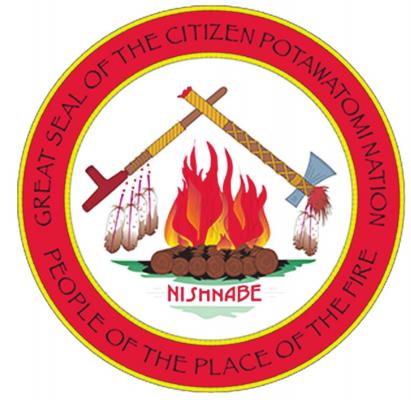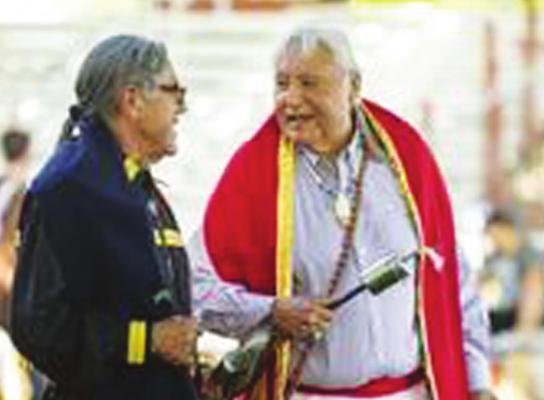Trail of Death for Potawatomi Nation
American history textbooks commonly reference the relocation of Native American tribes or the Trail of Tears. But most omit the Potawatomi Trail of Death.
The Trail of Death was the 660-mile journey to Kansas by 860 members of the Potawatomi Nation from their homes in the Great Lakes region in 1838.
“Our Trail of Death got its moniker because over the 660 miles that we were forced to walk from northern Indiana toward the new reservation in Kansas, around 40 tribal members died,” said Kelli Mosteller, director of the Citizen Potawatomi Nation Cultural Heritage Center. “We were forced out at the end of a gun. They did not want to negotiate with us to stay, so it was a forced removal.”
The Potawatomi are of the Neshnabe people and have seven federally recognized tribes in the United States and two Canadian first nations. Before their journey to Kansas, they lived along the shores of Lake Michigan in Michigan, Illinois, Indiana and Wisconsin.
“Following the Indian Removal Act, we started to get pressure to sign removal treaties from the federal government,” Mosteller said.
Individual Potawatomi villages and communities signed treaties, which caused more than a dozen removals from one part of the Great Lakes area to another and eventually the west. In 1833, larger removal treaties were signed, which moved much of the tribe from Chicago to Iowa.
“They lived there for a few years, where they were promised that would be their land forever and always, and of course that didn’t work out,” Mosteller said.
After those promises were broken, some members of the Potawatomi Tribe were pushed onto the Trail of Death. The federal government had the Potawatomi leaders shackled in the back of a prison wagon. There was a shortage of food, water and horses. Young children and the elderly were forced to walk the entire way.
“We were a woodland people who were leaving behind the place that our stories told us the Creator made for us,” Mosteller said. “Where our medicines grew, where the food that we knew how to prepare and grow grew, where our ancestors were buried. We were leaving behind the place that made us who we were, and being forced to walk … to a climate we did not know how to live in.”
The federal government looked at the two Potawatomi communities in Iowa and Kansas and decided to move them to a common reservation in northeastern Kansas.
“We lived on that reservation for about 15 to 20 years, when we were pressured once again to get ready to sell that land, to the railroad this time,” Mosteller said.
In 1867, the tribe signed another removal treaty and about 2,000 Potawatomi started making their way toward Indian Territory in what is now Shawnee, where they had purchased a reservation from the U.S. government.
They didn’t know the Absentee Shawnee were already living on that land, which led to tension and violence between the tribes. Federal legislation in 1872 helped determine where each tribe would end up. Then, in 1891, the Potawatomi land was opened up to a land run.
“So, we had not only the tribal communities to contend with, but also non-nnative settlers who came in and took over half our reservation in one afternoon,” Mosteller said.
Enrollment in the Shawnee-based Citizen Potawatomi Nation is now about 34,000. Mosteller and other tribal members want future generations to know that it is their right and their obligation to learn their people’s history. This includes learning the native language, participating in cultural activities and taking pride in who they are.
“Our ancestors survived a lot for us,” Mosteller said, “It is now on us to pick up that torch and carry it on to the next several generations, because we didn’t fight to let these things die.”
Loren Rhoades is a reporter for The Bison, the student newspaper at Oklahoma Baptist University.



